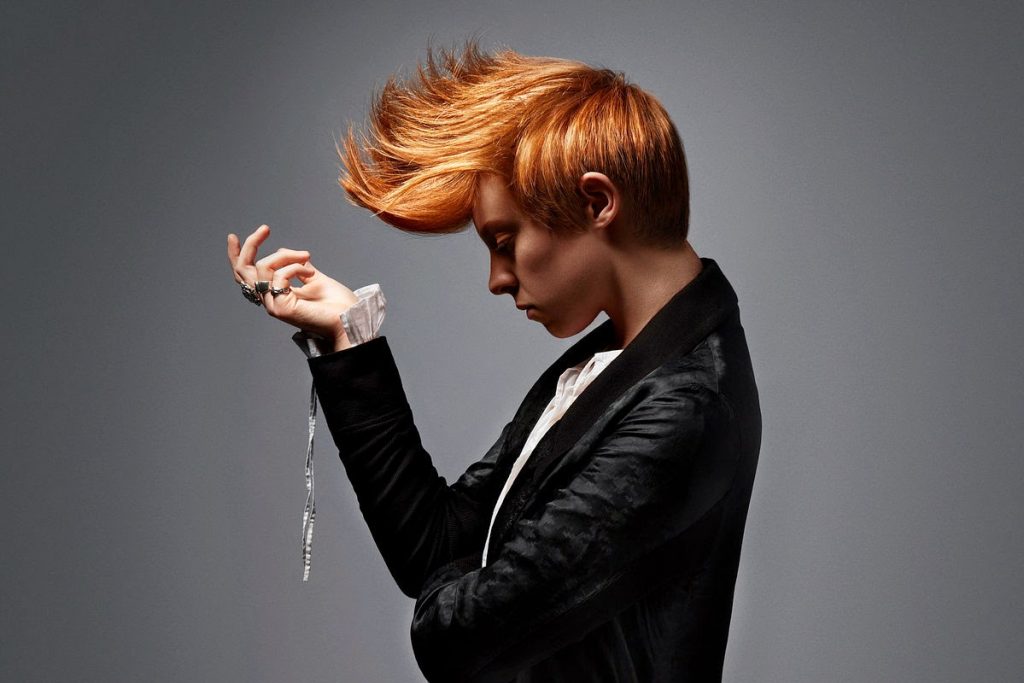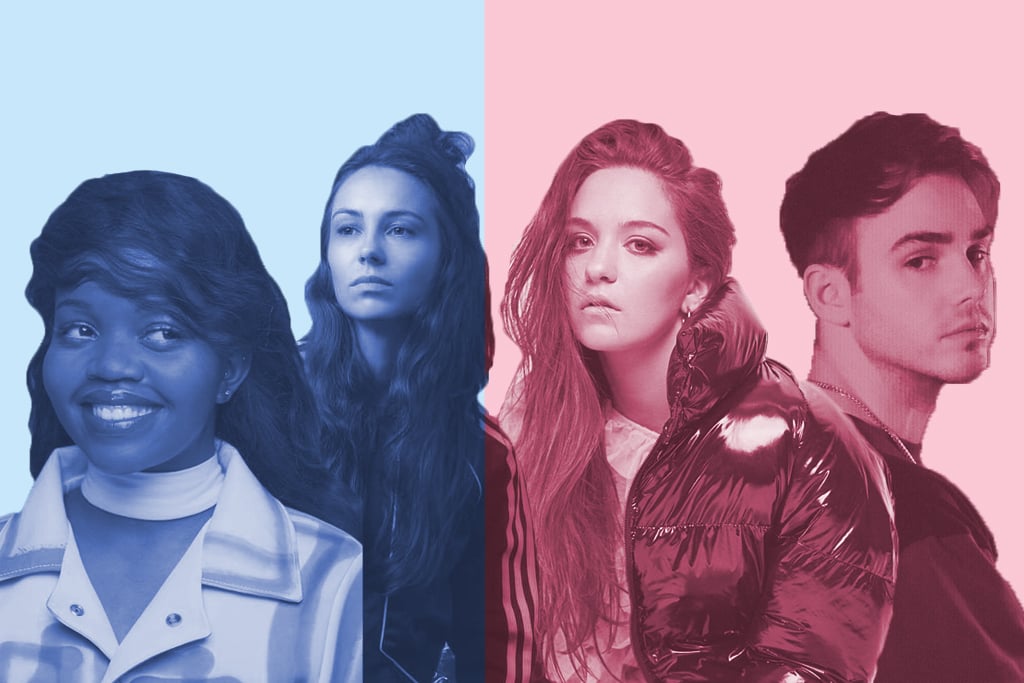2009 Created The Blueprint For Pop Music As We Know It
From La Roux to Florence and the Machine to Gossip, 2009 changed pop music forever.

2009 was one of the most, if not the most, influential year for pop music this millennium.
The genre reigned almost exclusively over the mainstream — a far cry from the hip-hop dominated charts of today — and it introduced us to artists who would go on to become the biggest artists of this generation. And it wasn’t just the big names that were cutting through: 2009 also saw alternative acts like Florence and the Machine arrive on the scene for the very first time.
It was a year that changed not only what we thought about pop music, but pop music itself.
Let’s Cast Our Minds Back
In 2008 a star was literally born when Lady Gaga exploded onto the scene with singles ‘Just Dance’, ‘Poker Face’ and ‘Paparazzi’ — each track finding global success. By the end of the year, she had released ‘Bad Romance’, thereby solidifying her new position as the queen of pop. At the same time as Gaga was tottering on lobster heels, Taylor Swift crossed over into pop with ‘Love Story’ and Drake scored his first global hit with ‘Best I Ever Had’.
If we didn’t want to be so positive about the year we could also mention that Flo Rida, Pitbull and Nickelback all scored a place in the ARIA top 50 highest selling singles. It’s something this country only redeemed itself with by sending The Veronicas to the top of the charts with our should-be-national-anthem ‘Untouched’.
While the giants ruled, however, alt-pop was quietly penetrating the mainstream. The blogs and forums were promoting new music faster and more effectively while legal downloads and pirated music were making immediate access simple.
Hype Machine, which pulled together the most popular music from blogs into a discovery chart, became crucial with labels actively attempting to send new signings up the charts. The internet was by no means new, but music discovery had never been so easy — according to the IFPI Digital Music Report, 2009 was the first year where digital channels made up more than a quarter of industry revenue, driven largely by iTunes. In the US, that figure bumped up to 46 percent.
While downloads grew, piracy did too. Global music sales fell for the tenth year in a row, with 28.9 million people said to be using file-sharing platforms like Torrent and Limewire. The internet had full power — and where radio and big music publications once dictated what people listened to, the public was now going it alone.
Alt-Pop Penetrates The Charts, And Britain Leads The Way
Dance-pop was by far the most popular trend on the charts in 2009, but there were a few artists that, with the help of blogs and fast access to music, began to create their own space in the industry.
Enter Florence and the Machine. In 2008, she had burst onto the scene with ‘Dog Days Are Over’ and ‘Kiss With A First’, but she made her first chart dent the next year with the whimsical and witchy ‘Rabbit Heart (Raise It Up)’. The proceeding album Lungs was a similarly woozy collection of alt-pop songs, that took her to the top of the charts in her home country and made it into the top 20 in the US. Later that year, she claimed her biggest hit with a cover of Candy Staton’s ‘You Got The Love’, making the harp the most popular it had ever been on the radio.
British radio was the first to truly embrace the new pop sound and the artists that were creating it.
‘Rabbit Heart’ producer Paul Epworth had almost exclusively produced for British alternative bands before Florence. After Florence, he went on to produce for Adele, Bruno Mars, Lorde and Coldplay becoming one of the most influential producers of post-2010 pop music.
Florence placed third that year on the BBC’s influential Sound Of… list, a ranking which credits itself with predicting the new sounds of the year. She was pipped by fellow Brit Little Boots — who scored a chart hit with ‘Remedy’.
It’s all sounding very British at the moment, and that’s because it was. British radio was the first to truly embrace the new pop sound and the artists that were creating it — such as Welsh act Marina and the Diamonds. Marina Diamandis generated early hype with ‘Mowgli’s Road’, a song that starts with “cuckoo” and told audiences straight-up that she wasn’t your run-of-the-mill pop girl. “Getting a song that starts with the word ‘cuckoo’ in the charts was worth a shot,” she told Digital Spy. The resulting album The Family Jewels scored a top 10 placing around the world.
It wasn’t just the new names that were scoring success though, as acts that had been operating in alternative circles for years were suddenly becoming widely popular. Beth Ditto-led band Gossip were already cult heroes, but they had their first and only chart success with Music For Men, led by the excellent single ‘Heavy Cross’. Similarly, Yeah Yeah Yeahs hit gold with their third album It’s Blitz, particularly with the blistering ‘Heads Will Roll’, which has since been remixed into a dance behemoth.
It wasn’t all Britain, of course. In Australia, left-centred pop acts had either been too pop for triple j, or too alternative for commercial radio, but 2009 saw two songs in particular bridge the gap: Ladyhawke’s ‘My Delirium’ and Empire Of The Sun’s ‘Walking On A Dream’.
Sounding unlike anything on commercial radio, they both scored a playing in the 100 highest selling singles of the year. To put it in perspective, the other Australian acts who made that list included Guy Sebastian, Natalie Bassingthwaite, Jessica Mauboy and Vanessa Amorosi.

La Roux
And Then There Was La Roux…
There’s one act we’ve left off until now purely because they deserved their own sub-heading. British duo La Roux were unlikely stars, who spoke down on mainstream pop while also infiltrating that very space they seemed to spurn. They openly admitted that Lady Gaga wasn’t really their “thing” and even publicly declared “Fuck Kanye West” after working with him.
They were provocative, and they also weren’t about to buy into the bullshit of the industry. While other emerging popstars were working with huge producers like James Ford or Greg Kurstin, La Roux’s debut album was almost exclusively written and produced by its members, Ben Langmaid and Elly Jackson. And it was massive. ‘In The Kill’, a sleek, ‘80s-tinged cut made waves in the UK, and then follow-up single ‘Bulletproof’ conquered charts across the club.
‘Bulletproof’ still ricochets off club walls today, powering on with militant synths and Jackson’s potent voice laying down that unbreakable melody. There are few pop songs that get a universal stamp of approval, but this one comes damn bloody close.
10 Years On, The Sounds Still Linger
A decade on and La Roux are no more, and Jackson has all but disappeared from sight following 2014’s Trouble In Paradise. La Roux’s impact, however, is stronger than ever, as pop continues to lean heavily towards the alternative.
Hype Machine no longer holds power as the dominance of blogs has slipped with the rise of streaming platforms and curated playlists. Streaming now makes up 63 percent of revenue, and iTunes downloads continue to fall. The digital market which, in its infancy, catapulted alt-popstars into the charts, now impacts on an even larger scale.
Hip-hop currently reigns supreme across global charts, but if you look at the ARIA rankings in Australia right now, it’s the untraditional popstars that are challenging the genre’s dominance. There’s Florida DIY muso Dominic Fike with his debut single ‘3 Nights’, triple j Unearthed newbie Kian with his mega-hit ‘Waiting’ and, of course, Billie Eilish who does massive streaming numbers with every release. These are all artists who began uploading their own music independently before finding favour with a commercial audience — an audience that is increasingly more open to new sounds.
Billie Eilish, having released her debut album When We Fall Asleep, Where Do We Go? last week, is arguably one of the biggest artists on the planet right now, but her songwriting approach is strictly intimate. Her work is almost exclusively produced by her brother Finneas, a methodology that recalls the vision of Florence and the Machine and La Roux. All are pop outliers who draw on dark imagery and organic instrumentation — and while Florence is one of the biggest festival headliners on the planet right now, Billie is well on her way to that level, packing huge venues on a sold-out world tour.
And while La Roux may not be around any longer, their influence is still strong. Their synth-led, ‘80s-tinged pop has become a blueprint for mainstream pop: Ellie Goulding adopted it immediately on her debut album Lights and Carly Rae Jepsen has come close to matching the euphoria of ‘Bulletproof’ with songs like ‘Run Away With Me’. Even Katy Perry leant into the sound on her last album Witness.
Songwriting and production collective PC Music may have taken synth-pop and put it into hyperdrive, but it’s hard to imagine it being able to have a presence in the charts without a soft introduction 10 years ago. Charli XCX played into the mainstream earlier in her career but she eventually found a home with PC Music, especially SOPHIE and A.G. Cook, and has since developed a dedicated fanbase with her synth-heavy, kitsch sound.
SOPHIE, in particular, is a producer that never would have found commercial favour pre-2009. The Brit garnered a cult following online before finding an unlikely place on some of the biggest pop records. As well as Charli, she produced for Madonna’s ‘Rebel Heart’, worked on a record with Flume, Vince Staples and made beats with fellow pop-altering producer Cashmere Cat. Like Kanye went to La Roux after hearing ‘In The Kill’, major popstars are now going to these underground names to inject difference into their music. SOPHIE is currently working with Lady Gaga.
The biggest change wrought by 2009 was that the walls that had keep musical oddballs out of the mainstream were suddenly torn down.
Interestingly, pop can be so abnormal now, it’s difficult to even notice it. Marina (sans the Diamonds) has returned this year to a genre that’s constantly pushing boundaries. Where she once looked like one of pop’s most outrageous players, she looks somewhat safe next to an artist as loud as, say, Lizzo.
While La Roux and Marina & The Diamonds have had a particular influence on the sonic development of pop, the biggest change wrought by 2009 was that the walls that had kept musical oddballs out of the mainstream were suddenly torn down.
New artists are able to find success without getting in the studio with a major producer, or following the radio-approved sound of the time. 2009 proved that DIY champions could dominate the globe without compromise.
Sam Murphy is a music writer based in Sydney, and Co-Editor of The Interns. Follow them on Twitter.


